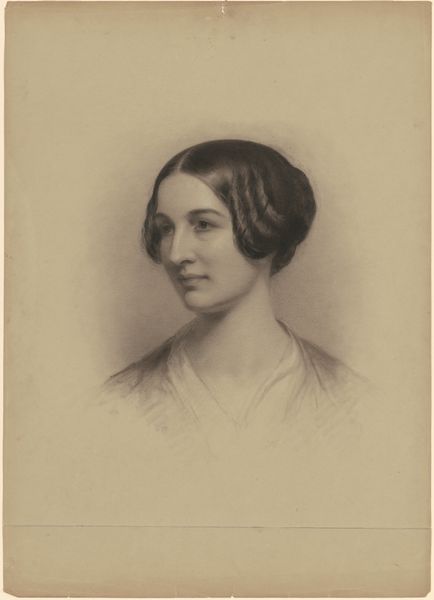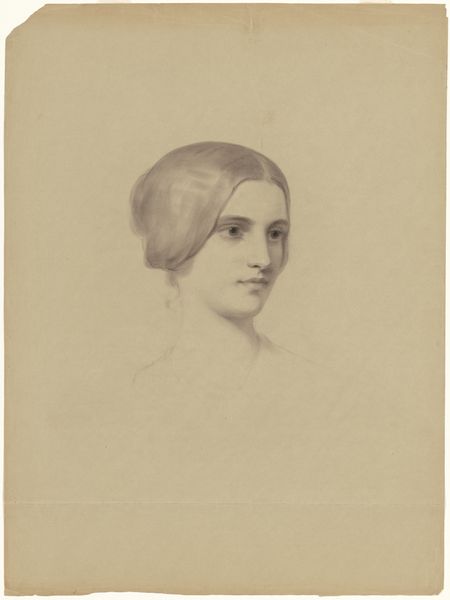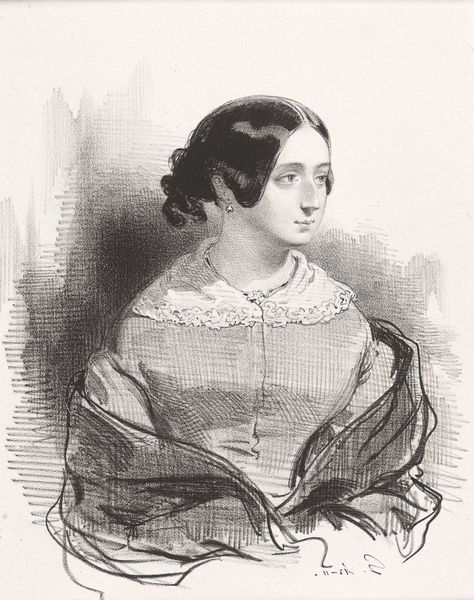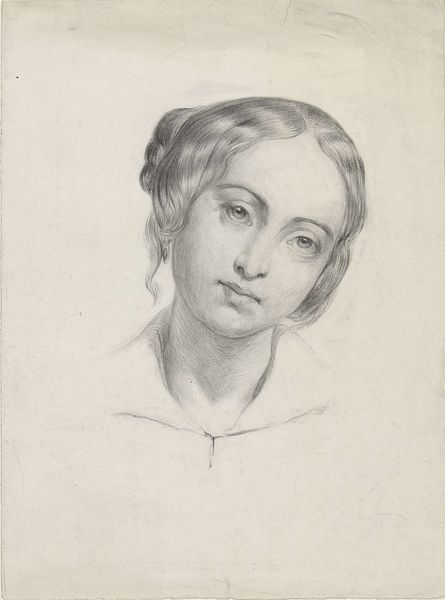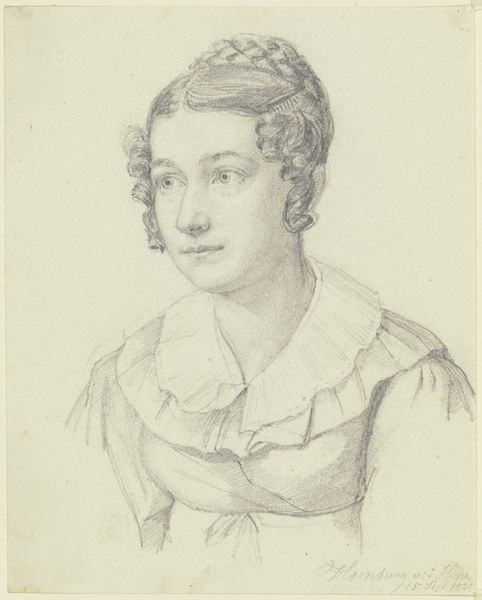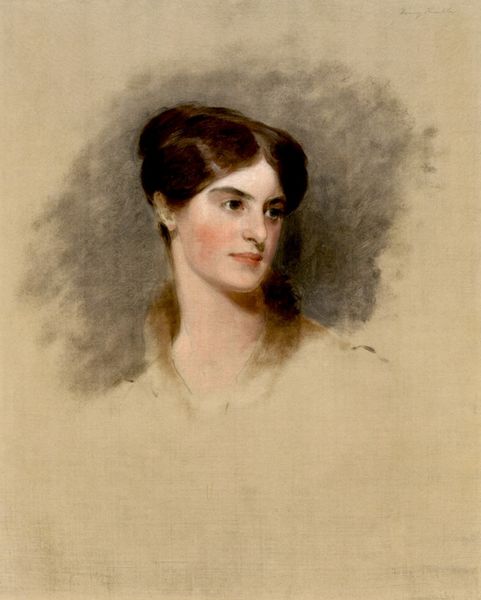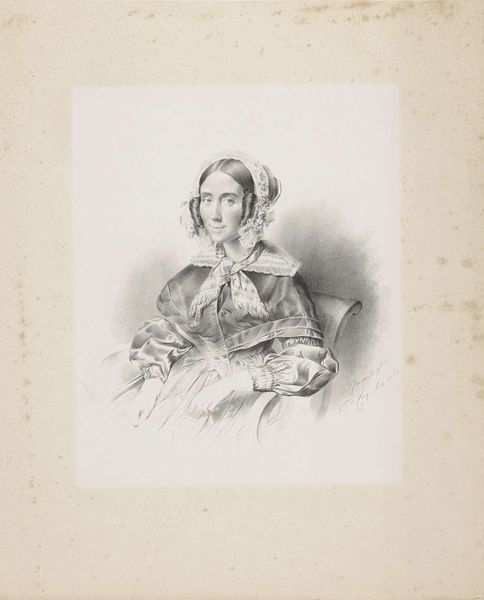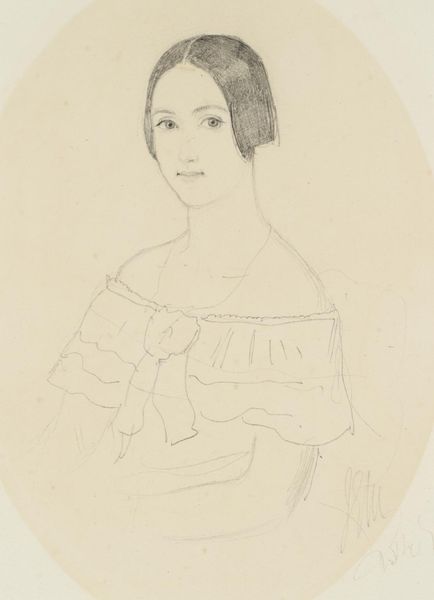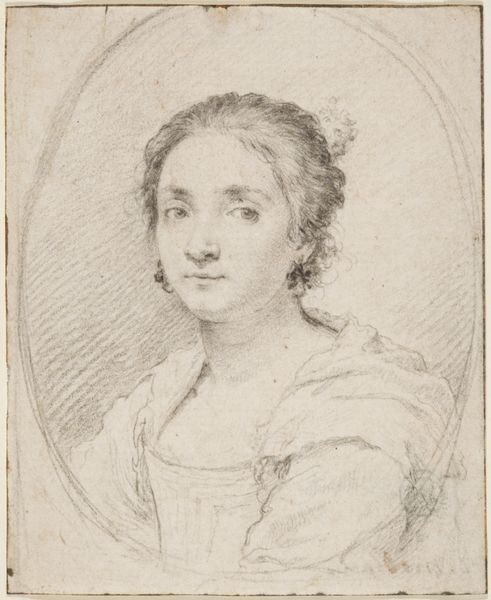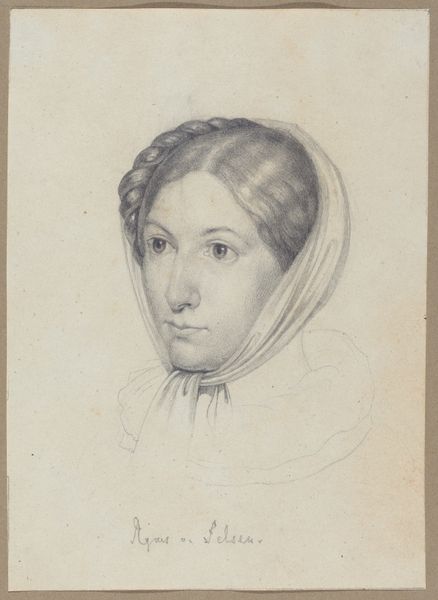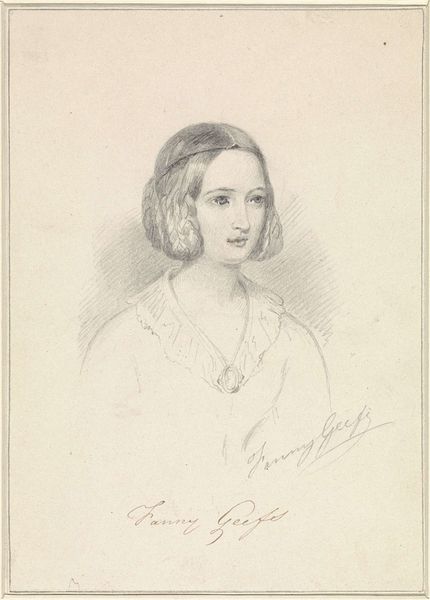
Portrait Of Grand Duchess Olga Nikolaevna, Later Queen Consort Of Württemberg 1856
0:00
0:00
Copyright: Public Domain: Artvee
Curator: This is a portrait of Grand Duchess Olga Nikolaevna, who later became Queen Consort of Württemberg, created by Franz Xaver Winterhalter in 1856. It's rendered in pencil on paper. Editor: There's an incredible softness to it, a kind of gentle melancholy in her eyes. The delicate shading really brings out a vulnerability. Curator: The oval composition focuses our attention directly on the sitter. Winterhalter's technique uses soft gradations of light and shadow. Note how the almost ethereal quality of the drawing contributes to its Romantic aesthetic, really emphasizing feeling and sensibility. Editor: That may be, but let's also consider Olga's position. As a grand duchess, and later queen, she represents a nexus of power and privilege. Even in a drawing this subtle, her social standing is meticulously rendered through her idealized beauty. Curator: I see it as a study in idealized beauty as it operates formally within the composition. The flowing lines of her shawl, the curve of her neck—these visual elements coalesce to present a specific vision of feminine grace. Editor: True, but who benefits from such portrayals? The creation and dissemination of these images helped solidify the power of the aristocracy and normalize these specific beauty standards. These drawings are not politically neutral. Curator: Of course. Though by directing the gaze towards formal elements of line, shape, and value, a kind of aesthetic purity emerges. In itself the study of form can communicate powerfully without necessary ideological context. Editor: Still, let’s remember Winterhalter was employed to depict royalty at their best. We risk divorcing art from the society that enables its very existence if we separate its formal elements entirely from its subject. What does it mean to represent Olga like this in the context of her own historical era? Curator: Fair enough, there's much more than meets the eye on a superficial level in terms of representation and identity, despite its minimalist aesthetic. Editor: Absolutely, even simple portraits can open a wealth of interpretation through form and content.
Comments
No comments
Be the first to comment and join the conversation on the ultimate creative platform.
